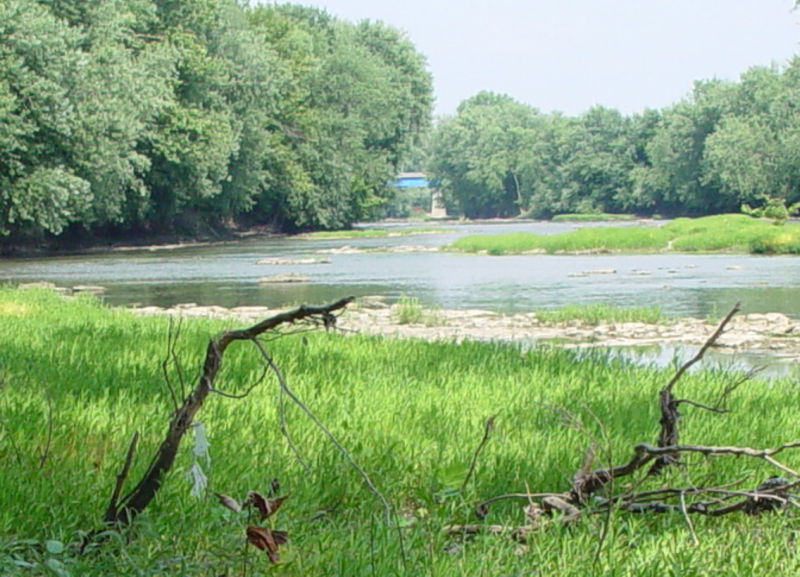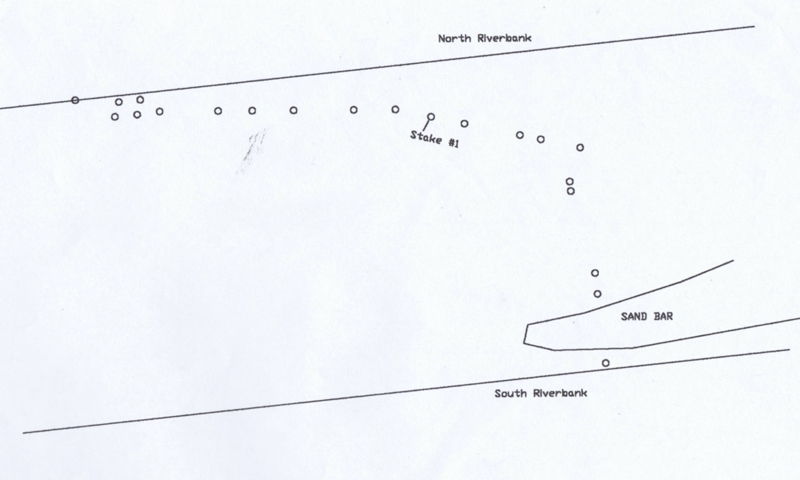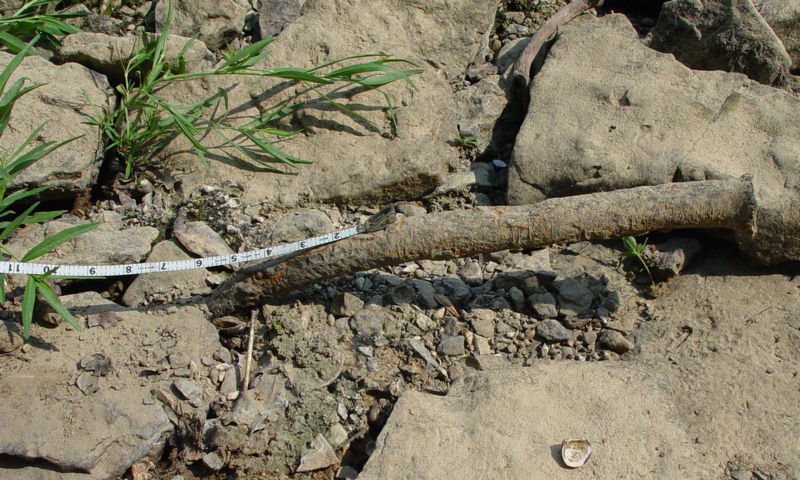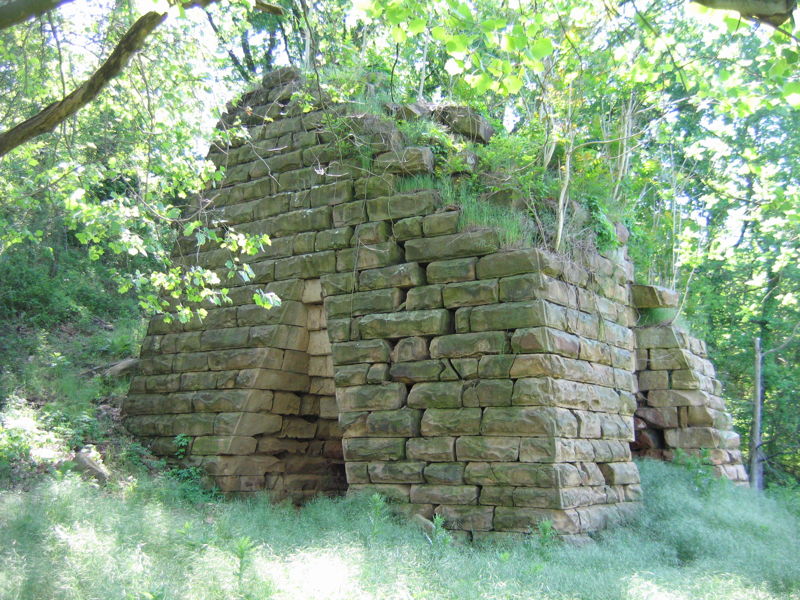
The following article by Charles Hartley originally appeared in The Courier-Journal on 22 Feb 2012. It is archived here with additional information for your reading enjoyment.
On most days, people who visit the Shepherdsville City Park down by the Salt River find it a quiet, peaceful place. It's hard to imagine the sounds they could have heard here 175 years ago. Instead of river water lapping against the bank, or skipping over rocks, they could hear the roar of water racing beneath a paddle wheel. Instead of birds chirping, they could hear the crackle of billows-fed fire, and the banging of hammer on metal.

In 1837 a forge and rolling mill had been in operation in this place for nearly twenty years. As early as 1813, John W. Beckwith and Frederic W. Grayson bought two tracts of land from Adam Shepherd. One tract of 150 acres lay along the north side of Salt River, just west of town in what is now the Shepherdsville City Park. The second tract of 50 acres actually lay in the bed of the river adjoining the first tract. It was their plan to build an iron forge on the land, to be powered by water flowing through a race, or channel, they would build along the river's shore.
By 1819 work on the mill race had begun. The water needed to be channeled to the north shore so holes were drilled in the rock bed beginning near the south shore and extending a bit more than half way across the river. Then the holes moved downstream, each one drawing closer to the shore line. Long iron rods were driven into the holes to support the boards used to construct a partial dam and race, forcing a rapid flow of water through where the forge's paddle wheel would sit. All that remains in the river today are the holes drilled, and a handful of bent iron rods. Even less can be found ashore.


In 1818, the Kentucky legislature had chartered 46 semi-independent banks across the state including one in Shepherdsville. Banks like this could also print their own money which was only backed by the reputation of the individual bank. Still, the influx of all this paper money led people to use their credit to borrow money for speculative ventures.
Beckwith and his partner borrowed money from the Shepherdsville Bank and they were caught up in the financial panic of 1819 which swept the nation as banks began calling in loans, and in many cases refused to accept the bank notes issued by other banks. While his new forge and flour rolling mill would make money, it was not enough to meet his expenses, forcing him to borrow even more money, this time from a pair of Pennsylvania investors, Cornelius Comegys and John Peirshouse. Before this debt could be paid, both Beckwith and Grayson died.
In 1828, Bullitt Circuit Court ordered the land and business sold to pay their debts. James D. Breckinridge bought half of it, and Comegys the rest. The forge and rolling mill continued in operation, and in 1833 John H. Baker bought Breckinridge's share for $2000. Two years later he bought the rest for another $2000. A financial boom, again backed by unsound paper money, was underway.
The forge was supplied with iron smelted from low-grade ore provided locally. Baker was involved in constructing two charcoal blast furnaces to provide the iron he needed. The first furnace, constructed about 1832, has largely disappeared, but the second one, built near Belmont, is still standing.

The financial panic of 1837, brought on by President Jackson's refusal to allow the U.S. Treasury to accept anything but gold and silver-backed bank notes in payment for public land, forced Baker into debt, despite the fact that his forge was profitable. Charles Quiry and James Tyler, of Louisville, held much of Baker's debt, and when Baker could not pay it, the business and all of Baker's land holdings were taken by the two men.
As a side note, according to records kept at Shakertown at Pleasant Hill, Kentucky, several large iron castings for wash furnaces were purchased from the Shepherdsville forge in 1849, and likely still exist at Shakertown.
Despite their efforts to turn a profit, the quality of iron produced and the cost of producing it drained their finances and Quiry and Tyler sold everything to a firm that called itself the Shepherdsville Iron Manufacturing Company. This firm was even less successful, and the business shut down near the end of the Civil War.
Today there is little evidence that the forge ever existed. Like the Bullitt's Lick salt wells that came before it, the iron forge, and the dam that powered it, are just a distant memory in Bullitt County history.
Copyright 2012 by Charles Hartley, Shepherdsville KY. All rights are reserved. No part of the content of this page may be included in any format in any place without the written permission of the copyright holder.
The Bullitt County History Museum, a service of the Bullitt County Genealogical Society, is located in the county courthouse at 300 South Buckman Street (Highway 61) in Shepherdsville, Kentucky. The museum, along with its research room, is open 10 a.m. to 4 p.m. Monday through Friday. Saturday appointments are available by calling 502-921-0161 during our regular weekday hours. Admission is free. The museum, as part of the Bullitt County Genealogical Society, is a 501(c)3 tax exempt organization and is classified as a 509(a)2 public charity. Contributions and bequests are deductible under section 2055, 2106, or 2522 of the Internal Revenue Code. Page last modified: 12 Sep 2024 . Page URL: bullittcountyhistory.org/memories/iron.html